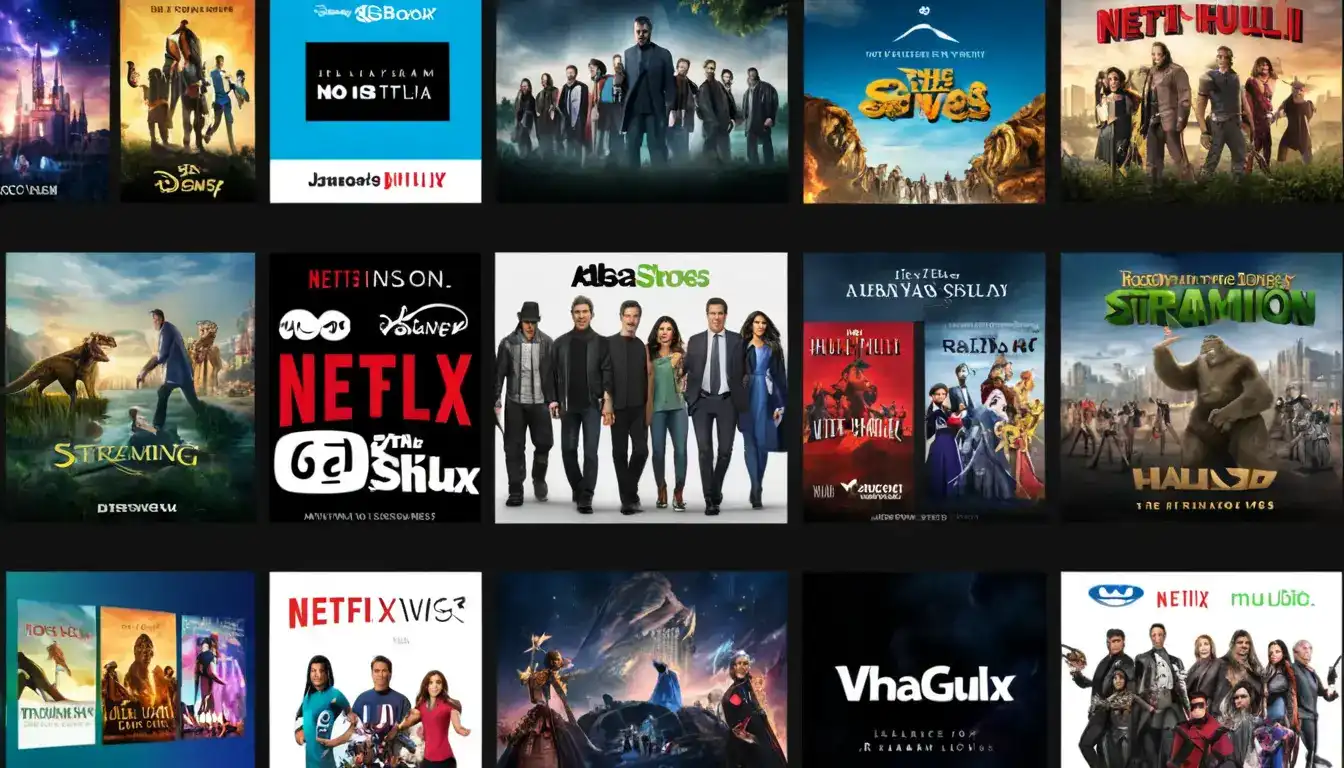Student Voice: Shape Their Own Future
Emily Willis

Photo: Student Voice: Shape Their Own Future
Student Voice: Empowering Young Minds to Shape Their Own Future
Imagine a world where young people aren't just passive recipients of education, but active architects of their learning journey. A world where their opinions matter, their ideas are valued, and their unique perspectives genuinely influence the path they take. This isn't a far-off dream; it's the powerful concept of student voice, and it's rapidly gaining recognition as a cornerstone for empowering students to truly shape their own future.
In an ever-evolving world, preparing students for success goes far beyond textbooks and tests. It's about nurturing critical thinking, fostering problem-solving skills, and instilling a sense of agency that allows them to navigate challenges and seize opportunities. Student voice is the vehicle that drives this transformation, turning learners into leaders and passive observers into engaged contributors.
What Exactly is "Student Voice"?
At its core, student voice is about providing young people with authentic opportunities to express their ideas, opinions, and perspectives on matters that affect them, particularly within their educational experience. It’s more than just speaking up; it's about active participation, genuine decision-making, and taking ownership of their learning. It encompasses their input on curriculum, teaching methods, school policies, and even the broader school environment.
Think of it as shifting from a "top-down" approach, where decisions are made for students, to a more collaborative, "student-centered" model where decisions are made with them. This empowerment allows students to contribute to an education that aligns with their values, interests, and goals, fostering a deeper connection to their learning.
Why Student Voice Matters: The Unseen Benefits
The impact of student voice extends far beyond simply making students feel heard. Research consistently shows that when students believe they have a voice in school, they are significantly more academically motivated and engaged. This powerful approach yields a multitude of benefits that prepare young people for success in school and in life.
Developing Essential Skills
When students are given opportunities to express themselves and engage in meaningful dialogue, they naturally develop a host of vital skills.
- Critical Thinking and Problem-Solving Skills: Actively participating in discussions and decision-making processes requires students to think critically, analyze information, consider different perspectives, and form well-reasoned arguments. This helps them identify and analyze problems, propose solutions, and collaborate effectively.
- Communication and Collaboration: Expressing thoughts and ideas respectfully and constructively is a crucial skill. Amplifying student voice provides opportunities for students to refine their communication skills, both verbally and in writing. Collaborative projects further promote interpersonal skills like active listening, empathy, and effective teamwork.
- Leadership and Self-Advocacy: Taking initiative, making decisions, and following their passions empowers students, building confidence and independence. They learn to advocate for themselves and others, laying the groundwork for future leadership roles.
Boosting Engagement & Motivation
Imagine being part of something you helped create. That's the feeling student voice inspires. When students have a say in their education, it makes learning relevant and meaningful to them. This intrinsic motivation drives them to seek knowledge beyond the classroom, leading to a more enriching and meaningful education. Students who feel heard and valued are more likely to be engaged in their learning, leading to increased motivation and interest.
Fostering a Sense of Belonging and Positive School Culture
Schools that prioritize student voice cultivate a culture of inclusivity, respect, and collaboration. By valuing the voice of every individual within the school community, an environment is created where students feel safe, valued, supported, and empowered to reach their full potential. This creates a positive and productive school climate and culture.
Preparing for the Real World: Shaping Their Own Future
In a rapidly changing world, adaptability and initiative are key. Student voice equips young people with the agency to navigate complex social and emotional landscapes, fostering resilience, empathy, and emotional intelligence. Students who have ownership over their learning also build resilience, learning to overcome challenges and setbacks, which helps develop problem-solving abilities and fosters a growth mindset. Ultimately, this prepares them not just for future careers, but for life itself.
How to Cultivate Student Voice: Practical Steps for Everyone
Fostering student voice isn't solely the responsibility of educators; it's a collective effort involving students, parents, educators, and the broader school community. Here are actionable steps for each group to empower students to shape their own future:
For Students: Finding Your Voice
It might feel daunting at first, but your student voice is incredibly powerful!
- Speak Up Respectfully: Don't be afraid to share your thoughts and ideas in class discussions, group projects, or school forums. Remember to always do so respectfully, even when disagreeing.
- Ask Questions: If something isn't clear, or if you have a different perspective, ask questions. This shows engagement and helps everyone learn.
- Offer Solutions, Not Just Complaints: If you identify a problem, try to think about potential solutions. Coming to the table with constructive ideas makes your voice more impactful.
- Join Student Groups: Get involved in student councils, clubs, or committees. These are excellent platforms for collective student voice and student leadership.
- Utilize Feedback Channels: If your school offers surveys, suggestion boxes, or forums, use them! Your input can drive positive change.
For Parents: Nurturing Their Voice at Home
Parents play a crucial role in empowering students by fostering their student voice from a young age.
- Listen Actively: When your child talks about their school day or expresses concerns, truly listen without immediate judgment or interruption. Show them their opinions matter.
- Encourage Expression: Create a safe space at home where your child feels comfortable expressing a wide range of emotions and ideas.
- Support Their Interests: Encourage them to explore topics they are passionate about. This builds confidence and helps them find their unique voice.
- Teach Respectful Disagreement: Help them understand how to articulate a different point of view constructively and respectfully, preparing them for democratic participation.
- Engage with the School: Attend parent-teacher conferences, school board meetings, or volunteer. Your active parental involvement can model the importance of voice.
For Educators: Creating a Voice-Friendly Classroom
Teachers are at the forefront of fostering student voice daily.
- Provide Opportunities for Choice: Offer students choices in project topics, learning methods, or even assessment types. This cultivates a sense of empowerment and ownership.
- Facilitate Student-Led Discussions: Encourage students to lead portions of lessons or discussions. This builds communication and leadership skills.
- Incorporate Feedback Mechanisms: Regularly ask for student feedback on your teaching methods, assignments, and the classroom environment. This can be through surveys, anonymous suggestion boxes, or one-on-one check-ins.
- Model Active Listening: Show students that you genuinely value their input by listening carefully, acknowledging their ideas, and responding thoughtfully.
- Create Safe Spaces: Foster a classroom culture where students feel safe to take risks, ask questions, make mistakes, and express themselves without fear of judgment. Praise for taking risks and showing courage can foster a more open and participatory learning environment.
- Make Lessons Personally Relevant: Connect curriculum to students' diverse experiences and interests, helping them find joy and meaning in learning.
For Schools & Administrators: Building a Culture of Voice
School leadership sets the tone for a truly voice-friendly environment.
- Establish Student Councils/Committees: Create formal structures where students can contribute to school governance and policy discussions.
- Involve Students in Policy Discussions: Beyond simple feedback, genuinely involve students in decisions that affect them, such as revising school rules, planning events, or even interviewing new staff.
- Create Safe Spaces for Expression: Ensure there are avenues for students to voice concerns or ideas, perhaps through a dedicated student advocacy office or peer mediation programs.
- Professional Development for Staff: Provide training for educators on how to effectively solicit, listen to, and act upon student voice. Some teachers may have reservations about losing authority or doubts about students' capacity, so support is key.
- Show the Impact: Crucially, demonstrate to students how their feedback leads to tangible changes. This validates their contributions and encourages continued engagement.
Challenges and How to Overcome Them
While the benefits of student voice are clear, implementing it effectively can come with challenges.
- Fear of Speaking Up: Some students, especially those from marginalized groups or those lacking confidence, may be hesitant to express themselves.
- Solution: Educators must actively encourage under-engaged and underrepresented voices. This involves creating an inclusive environment, providing individual support, and using varied methods for input (e.g., anonymous surveys, small group discussions, creative expression like art or poetry).
- Tokenism vs. Genuine Voice: Sometimes, schools might "collect" student opinions without genuinely acting on them, leading to disillusionment.
- Solution: Ensure that student voice is integrated into real decision-making processes. Be transparent about how feedback is used and what changes are made as a result. If a suggestion cannot be implemented, explain why.
- Logistical Hurdles: Time constraints, large class sizes, or a lack of resources can make it challenging to implement student voice initiatives.
- **Solution
Latest ✨
View Allconcept of minimalism as a way to declutter and simplify one's life. It highlights the benefits of minimalism, such as reduced stress, increased focus, and financial freedom.
Emily Willis
The traditional office environment is no longer the only place where productivity happens. Remote work has become a mainstream reality for many businesses, offering benefits such as increased employee flexibility, reduced overhead costs, and access to a wider talent pool.
Emily Willis
practical tips for fostering a love of learning in children. It emphasizes the importance of understanding and catering to diverse learning styles, making learning relevant and engaging, fostering a growth mindset, creating a supportive learning environment, and extending the love of learning beyond the classroom.
Emily Willis
culinary landscapes of Italy, France, and Japan, highlighting the unique and mouthwatering cuisines of each country. It explores the simplicity of Italian cuisine, the elegance of French cuisine, and the delicate dance of flavors in Japanese cuisine. It also delves into the cultural immersion of each country's culinary customs, emphasizing the joy of conviviality in Italy, the celebration of refinement in France, and the harmony of flavors and aesthetics in Japan.
Emily Willis
Business
View All
June 9, 2025
Achieve Customer Service ExcellenceMaster customer service excellence to build lasting loyalty & drive growth. Get your blueprint for success and exceed customer expectations!
Emily Willis

June 8, 2025
Optimize Your Supply ChainOptimize your supply chain for business success! Learn strategies to cut costs, boost efficiency, & satisfy customers with our comprehensive guide.
Emily Willis

June 8, 2025
PR Essentials for Business ExposureMaster public relations to boost your business. Discover core PR essentials for building trust, enhancing brand visibility, and driving growth.
Emily Willis
Economy
View AllDeflation explained: Discover why falling prices can harm the economy. Learn its causes, effects, and how to protect your finances.
Read MoreLooking to save on car insurance? Discover how to get accurate, personalized car insurance quotes online with this comprehensive guide. Fast, easy, and cost-effective.
Read MoreDeveloped economies face a new global order. Understand how they're adapting to multipolar power, tech disruption, and climate change for future prosperity.
Read MoreEntertainment
View All
August 4, 2024
Profiles of Famous Artists Who Inspire the Younger Generationthe inspirational aspects of famous artists such as Vincent van Gogh, Frida Kahlo, Pablo Picasso, Banksy, Yayoi Kusama, Jean-Michel Basquiat, Georgia O'Keeffe, Andy Warhol, Kehinde Wiley, and Ai Weiwei. It highlights their perseverance, innovation, authenticity, social commentary, mental health advocacy, and representation, among other qualities, and how these aspects continue to inspire young artists to pursue their creative dreams.
Emily Willis

August 5, 2024
Fandom's Power: Passionate Communities and Cultural ImpactFandoms are dedicated groups of fans who come together around a shared love for a book series, movie franchise, or other interest. They provide a sense of belonging and community for individuals, particularly those who may feel like outsiders in their everyday lives.
Emily Willis

August 4, 2024
The Evolution of Streaming Services Such as Netflix, Disney+, Hulu, and the Implications for the Traditional Entertainment IndustryThe rise of streaming services has revolutionized the entertainment industry, offering on-demand access to a vast library of content through internet-connected devices. Platforms like Netflix, Disney+, and Hulu have diversified their content libraries, reshaped consumer behavior, and challenged traditional distribution models. Technological advancements have enhanced streaming experiences, while economic and cultural implications have led to global market expansion and increased investment in original content production. The future of the streaming industry will be shaped by competition, convergence of media and technology, and the need for adaptation to changing consumer preferences. Embracing digital transformation and strategic partnerships will be crucial for stakeholders in navigating the evolving landscape of modern entertainment.
Emily Willis
Health
View Allmaintaining good health and well-being through nutritional choices. A balanced diet, incorporating whole foods, staying hydrated, consuming nutrient-dense foods, managing portion sizes, practicing mindful eating, eating regular meals and snacks, considering supplements, and adopting sustainable eating practices are all highlighted as effective strategies for enhancing overall.
Emily Willis
Quality sleep is essential for overall health and well-being, impacting physical, cognitive and emotional functioning. Lack of quality sleep can lead to a variety of health issues, including weakened immune function, heart problems, weight gain and cognitive impairment.
Emily Willis
cultivating healthy lifestyle habits to improve overall well-being. It focuses on three pillars of well-being: nutrition, exercise, and sleep. It provides tips on how to incorporate these practices into daily routines, such as eating a variety of foods, finding enjoyable forms of exercise, and establishing a consistent sleep schedule.
Emily Willis
Trending 🔥
View All
2
3
5
6
7
8
9
10
Sports
View AllAugust 4, 2024
Sports Technology Innovation: Revolutionizing Training and Performance Analysis
Read MoreAugust 5, 2024
Celebrating Sports Legends: Honoring Iconic Figures and Their Enduring Impact
Read MoreAugust 4, 2024
The Importance of Mental Training and Psychological Strategies in Helping Athletes Reach Their Peak Performance on the Field
Read MoreTechnology
View All
August 4, 2024
Revolutionizing Healthcare with Artificial Intelligence: Current Trends and Future Prospects
Artificial Intelligence (AI) is transforming the healthcare industry by improving diagnostic accuracy, personalizing treatment plans, and accelerating drug discovery. AI applications in diagnostics, imaging, patient care, and drug development are enhancing efficiency and patient outcomes. However, ethical considerations such as data privacy and algorithm bias must be addressed. The future of AI in healthcare looks promising with advancements in natural language processing, robotic surgery, and remote patient monitoring. Embracing AI technologies responsibly will lead to a more accessible, efficient, and patient-centered healthcare system.

August 5, 2024
How to Choose the Right Cyber Security Solution for Your Business
In today's digital age, businesses face numerous cybersecurity threats and need to protect sensitive data. To choose the right cybersecurity solution, businesses should understand their specific needs, assess potential threats, evaluate different solutions, consider ease of use and integration, evaluate the provider's reputation and support, conduct a cost-benefit analysis, and implement and monitor the solution effectively.

August 5, 2024
The Impact of AI on the Future of Work and Education
AI is rapidly advancing and reshaping industries, economies, and societies, especially in the areas of employment and education. In the workplace, AI is changing roles through automation and creating new job opportunities. The future of work will most likely involve collaboration between humans and AI, requiring workers to develop new skills and engage in lifelong learning.

August 4, 2024
The Rise of Edge Computing: Transforming Data Processing
Edge computing is a distributed computing model that processes data closer to its source, reducing latency, saving bandwidth, and enhancing security. It is transforming industries such as manufacturing, healthcare, retail, transportation, and energy by enabling real-time data processing and improving operational efficiency.





















